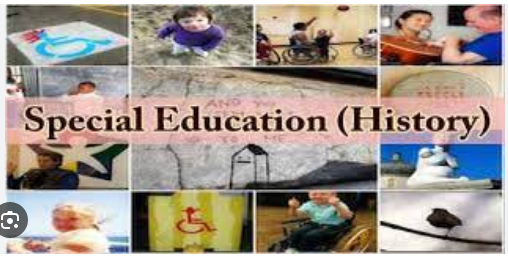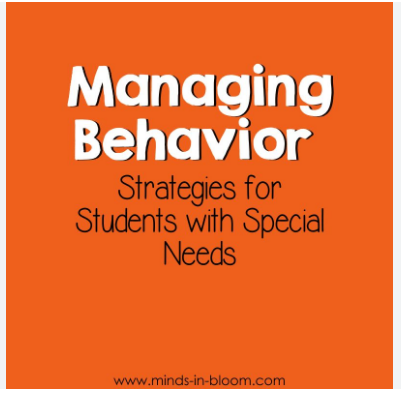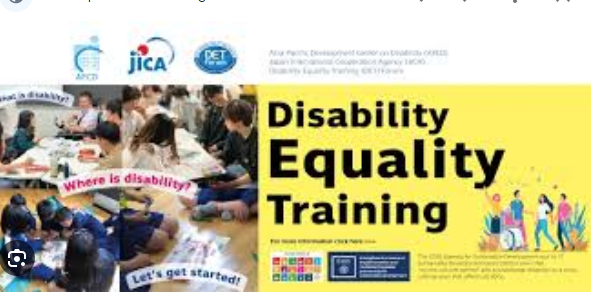Special Education Provision
Lecture 9 : Notes
Lecture nine discusses more about individuals with special needs. It gives details about speech and language impairments. I assure you that this lecture will make your comprehension of individual with special needs more comprehensive than before.
| OBJECTIVES OF THE LECTURE
At the end of this lecture, students should be able to: 1. Define speech and language disorders 2. Explain the causes of speech and language disorders 3. Accommodate students with speech and language disorders in the classroom situations.
|
9.2 Meaning of Speech and Language Impairments
Speech and language are part of a complex and interrelated communication process. Even though the acquisition of language and speech skills are proceeds in a predictable sequences, the rate of learning or using of communication tools show a great discrepancy among children.
In order to understand speech and language disorder one should understand what communication is and the difference between language and speech.
9.2.1 Communication
This term refers to the interactive exchange of information, ideas, desires and feelings. It involves not only the spoken language and written word but also body language, personal mannerism and anything that adds meaning to the message. For communication to take place three elements are to be present.
These are sender, message and receiver. People get involved in communication because they have information, ideas and feelings they want to share, thus in doing so a certain language have to be used.
The term refers to arbitrary code system or set of rules involving grammatical structures used to transmit meaning from one person to another. The most common code system is spoken language; computer language and sign language used by hearing impaired persons. Children should acquire first receptive language (ability to understand the meaning of what others say to them) before they become skillful in expressive language (ability to communicate meaning in a way that another person understand).Language has several dimensions including:
9.2.2.1 Phonology
Phonology is the study of linguistic rules governing a language sound system. The sound system carry elements called phonemes which are sounds that do not carry meaning, but when combined by other sounds they form a word.
9.2.2.2 Morphology
This is the basic unit governing how the basic units of meaning are combined into words. The basic units are morpheme –the smallest unit of a word that carries meaning.
9.2.2.3 Syntax
Syntax is a system of rules that govern meaningful arrangement of words into a sentence. If children are using language normally, they must learn linguistic structures to convey their intention or ideas.
9.2.2.4 Semantic
This is the system that governs meaning of words and sentences. It describes how people use language to convey meaning.
Pragmatics is a set of rules governs how language is used in different context. A child’s pragmatic competence can be assessed in regard to the variety of purpose for which she /he uses language.
9.3 Language Disorders
Language disorder is an impairment of comprehension or use of language regardless of symbol system used. However, language disorder manifested by children varies tremendously.
These variations may be manifested in failure to acquire verbal language by age three; delay in the rate of language development and interrupted progress in language development. Language disorder may involve both in syntax, semantics and pragmatics.
9.3.1 Causes of Language Disorders
Both child factors and environmental factors contribute to child language development. First a child must possess an intact sensory system for detecting stimuli in the environment and capabilities for processing the incoming stimuli (receive, interpret, store and retrieve information).
Second the environment must provide certain inputs such as stimuli to be detected by the child, selective reinforcement of appropriate response the child gives to the stimulation.
Problems or abnormalities within the child or the environment can interfere with language development. If the child’s sensory system does not allow detection of stimuli in the environment because of sensory impairment (hearing) language learning will be more difficult.
Likewise, language learning will be more difficult if the child’s cognitive systems are inefficient (mental retardation or brain damage) in encoding sensory inputs (perception) store it (memory) and attach symbol to it (association, discrimination and abstraction).
Environmental limitations on the other hand restrict language development. For example a child who is unable to explore the environment and whose repertoire is limited may be further deprived by an environment that offers inadequate stimulation.
8.4 Speech Disorders
Speech disorders are among the most frequently reported problem conditions among the children. Yet in determining speech disorders, we should compare child’s speech to the adult standard and notice behaviours that are appropriate,
irregular or missing. Speech production involves physical production and shaping of sound, using oral mechanism (tongue, teeth, oral cavity and larynx or voice box).
Basically speech production involves three systems that is the respiratory system which must provide a source of power in the form of a controlled air stream , vocal tract(throat, nose and oral cavity ) which must be structurally intact and functionally operative for the speech sound to be produced accurately and coordination of the fine motor movement of the articulators to produce various sounds. Speech disorders are divided into:
8.4.1 Articulation Disorders
This is the irregularities in oral production of the vowel and consonants sounds in the language. Common articulation errors are classified into four types including:
Omissions: pronouncing only parts of words for example omitting the sound at the beginning of words (“I ove my little dog/abbit” for “I love my little dog/rabbit”).
Substitutions: replacing one sound with another (for example b for v, “berry” instead of “very”, w for r, “wabbit” instead of “rabbit” or “woad” for “ road”).
Distortions: approximating correct pronunciations but deviating slightly ,usually because the child does not use the tongue ,teeth or oral cavity correctly to produce the sound ( for example “ts” or “th” for “t”).
Additions: adding extra sounds to words (for examples “summber” instead of “summer”, “warsh” for “wash” etc).
8.4.2 Voice Disorders
This is inappropriate pitch, volume or voice quality for communicating effectively. Voice disorder generally involve a problem in loudness or softness of the voice .
It may be caused by lack of control in voice production resulting from impaired hearing, cerebral palsy or faulty learning (scream or shout to gain someone’s attention).Likewise, voice disorder involve a problem in voice quality caused by excessive or insufficient nasality, breathiness, harshness and hoarseness.
8.4.3 Fluency Disorders
This is irregularities in the flow or rhythm of speech outputs involved in formation of sound, words, or sentences. This is commonly referred to as stuttering or stammering a disorder that involve abnormal repetitions, hesitations, prolongations of speech sound or syllables involved in speech production.
8.5 Identification and Assessment of Children with Language and Speech Disorder
Language development in children begins before a child utters his/her first word, while the tests for language delays or disorders are not administered until the child is two years old.
Irregularities in the nonverbal sound system such as a strange infant cry or in the sucking, swallowing or breathing system may predict a problem in spoken language development, which will impede speech production. Therefore, the following procedures are used to identify children who have communication disorders:
- Screening children who are suspected of having communication disorders and who may need additional testing or a full evaluation.
- Evaluating those identified during screening and form referrals with appropriate audiological, speech and language assessment tools.
- Making appropriate placement for children who need speech or language inter 8.6 Instructional Strategies
As with all students with language and speech disorder, collaboration with multi-disciplinary team is necessary. Student with speech or language disorders will receive services from many education professionals, including general education teachers, special education teachers and speech and language pathologists.
Speech-language pathologists provide a variety of professional services aimed at helping children develop effective communication skills. The services include:
- Helping children with articulation disorder to learn proper production of speech sounds.
- Helping children who stutter to speak more fluently.
- Assisting children with voice disorder to improve their voice quality.
- Helping students with aphasia to relearn speech and language skills.
- Evaluating selecting and developing augmentative and alternative communication system.
- Enhancing communication effectiveness.
The general education teacher should work with the speech-language pathologist to incorporate strategies to help the student generalize strategies mastered in speech therapy.
This may include corrective measures, helping with speech and language exercises, and providing students with immediate feedback when the speech-language pathologist is not present. The general education and special education teacher should both collaborate with the speech-language pathologist for intervention and teaching strategies.
| SUMMARY
The lecture explained that speech and language are part of communication process .Communication was defined as the interactive exchange of information, ideas, desires and feelings while language was defined as arbitrary code system or set of rules involving grammatical structures used to transmit meaning from one person to another. Language has several dimensions including phonology, morphology, syntax, semantic and pragmatics. It was explained that language disorder is an impairment of comprehension or use of language regardless of symbol system used. It is caused by both child factors and environmental factors .Child factor includes inability of child’s sensory system to detect stimuli in the environment because of impairment. Environment factor includes child’s inability to explore the environment. The lecture also described speech disorder as the frequently reported problem among children although we have to make comparison between child speech and adult standard to notice behaviour that irregular or missing. Speech production involves three systems; the respiratory system, vocal tract and coordination of the fine motor movement of the articulators. Types of speech disorders identified in this lecture are:
It was discussed that children with language and speech disorders have the range of characteristics such as absence of a functional or age appropriate communication system interference with social interactions frustration of the children and effects upon self –image and difficulties in learning and performance in cognitive tasks. Furthermore children with speech and language disorder are assessed and identified through four procedures including screening, evaluating and making appropriate placement. Again, children with language and speech disorders get services from education professionals, including general education teachers, special education teachers and speech and language pathologists.
|




